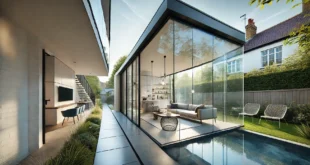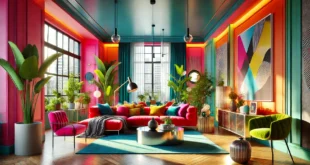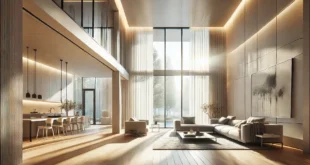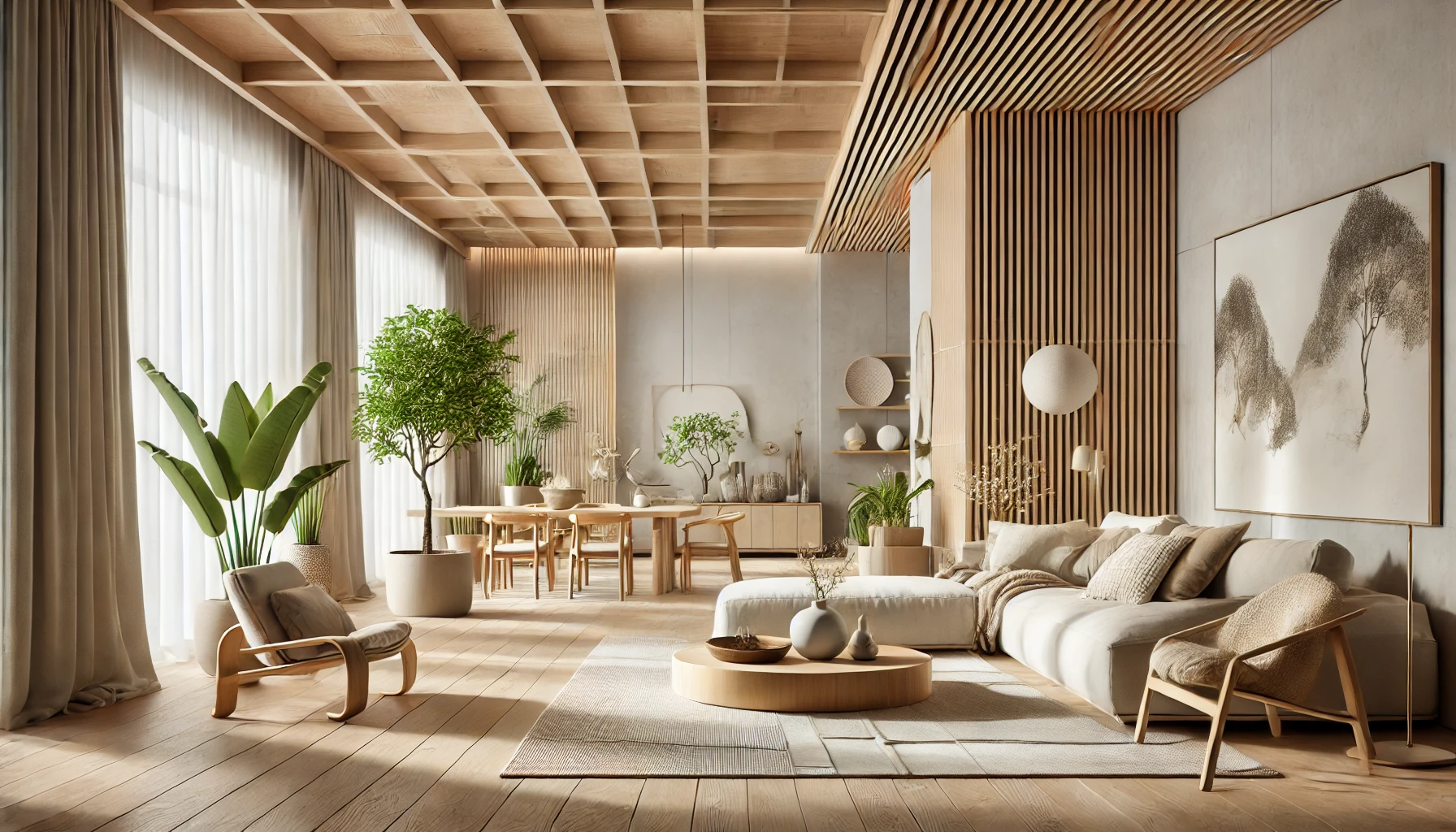
Welcome to a journey where design meets tranquility. If you’re looking to transform your living space into a peaceful sanctuary, Zen home design could be the key. This aesthetic, rooted in simplicity and mindfulness, allows for a calm and serene atmosphere within the home. Whether you’re revamping your entire house or making small changes, Zen design provides numerous ways to create a more balanced and harmonious space. We will explore various aspects of Zen home design, breaking down actionable tips that can turn your vision into reality.
We understand that your home is more than just a space; it’s a reflection of your lifestyle and well-being. By incorporating Zen principles into your home design, you’ll not only elevate the aesthetic value but also invite a sense of peace and mindfulness into your daily routine. Whether you’re a first-time homeowner or looking to redesign an existing space, this guide will walk you through everything you need to know about Zen home design. Ready to start your transformation? Let’s dive in!
Zen Home Design Ideas for Every Room
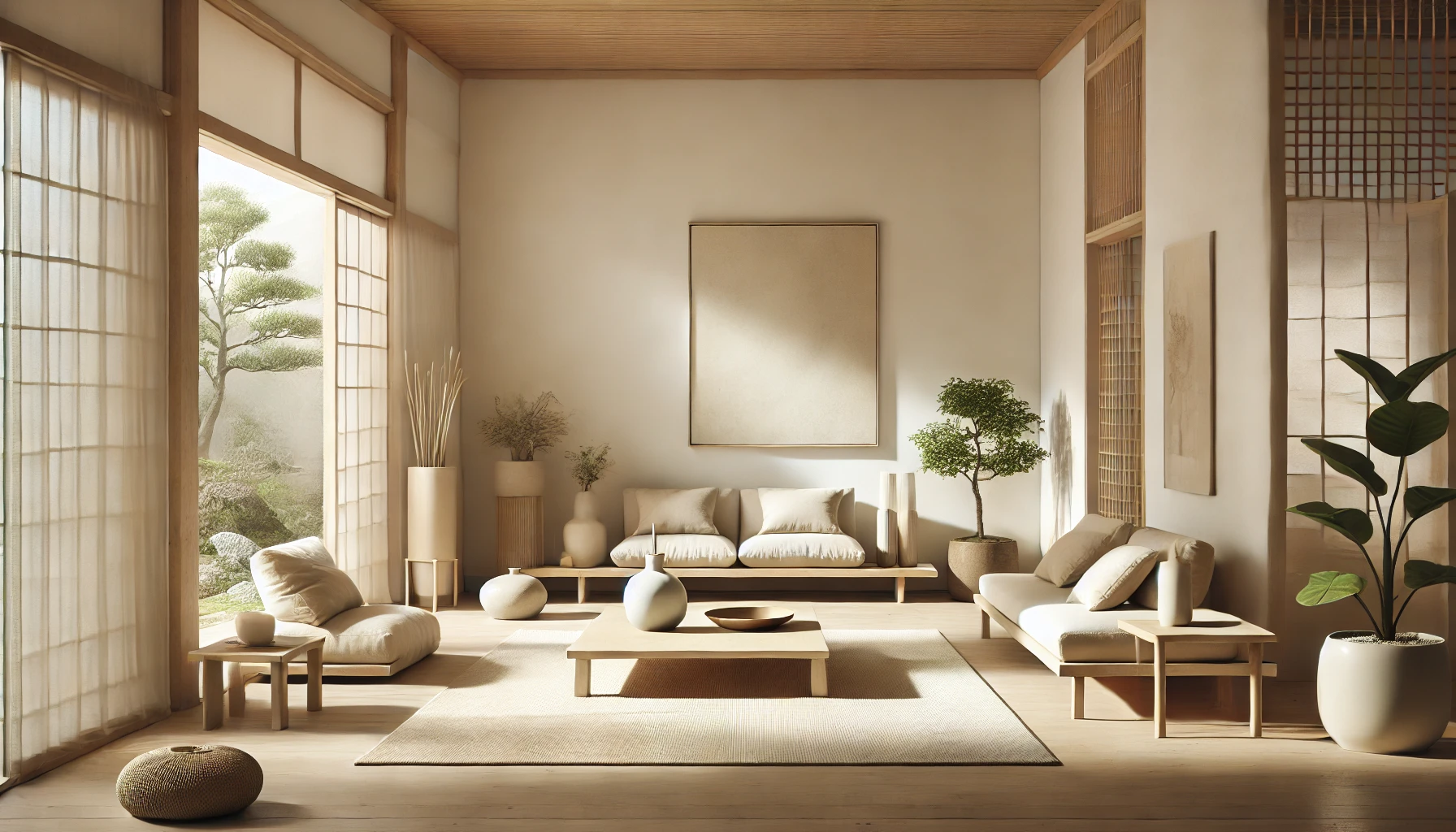
Maximizing Minimalism
The first step in creating a Zen home design is embracing minimalism. A clutter-free space allows for clearer thinking and less stress. Start by decluttering your living spaces and opting for furniture and decor that serve a purpose without overwhelming the room. Minimalist Zen home design is about function over form, with each item having its place and meaning.
Once you’ve decluttered, focus on simplicity in your furniture choices. Neutral tones, natural materials, and clean lines help foster a serene environment. This minimalist approach works in every room, from the living room to the kitchen, creating a cohesive and peaceful home.
Incorporating Natural Elements
Nature plays a vital role in Zen home design. Introducing natural elements such as wood, stone, and plants can enhance the connection between your indoor and outdoor spaces. Plants are a simple yet effective way to introduce tranquility, while wooden furniture offers warmth and earthiness to your interior.
Water features such as small fountains can also add to the Zen atmosphere, bringing the calming sound of flowing water into your home. These elements are essential for creating an oasis of calm that will help you disconnect from the fast pace of modern life.
Minimalist Zen Home Design: Less is More
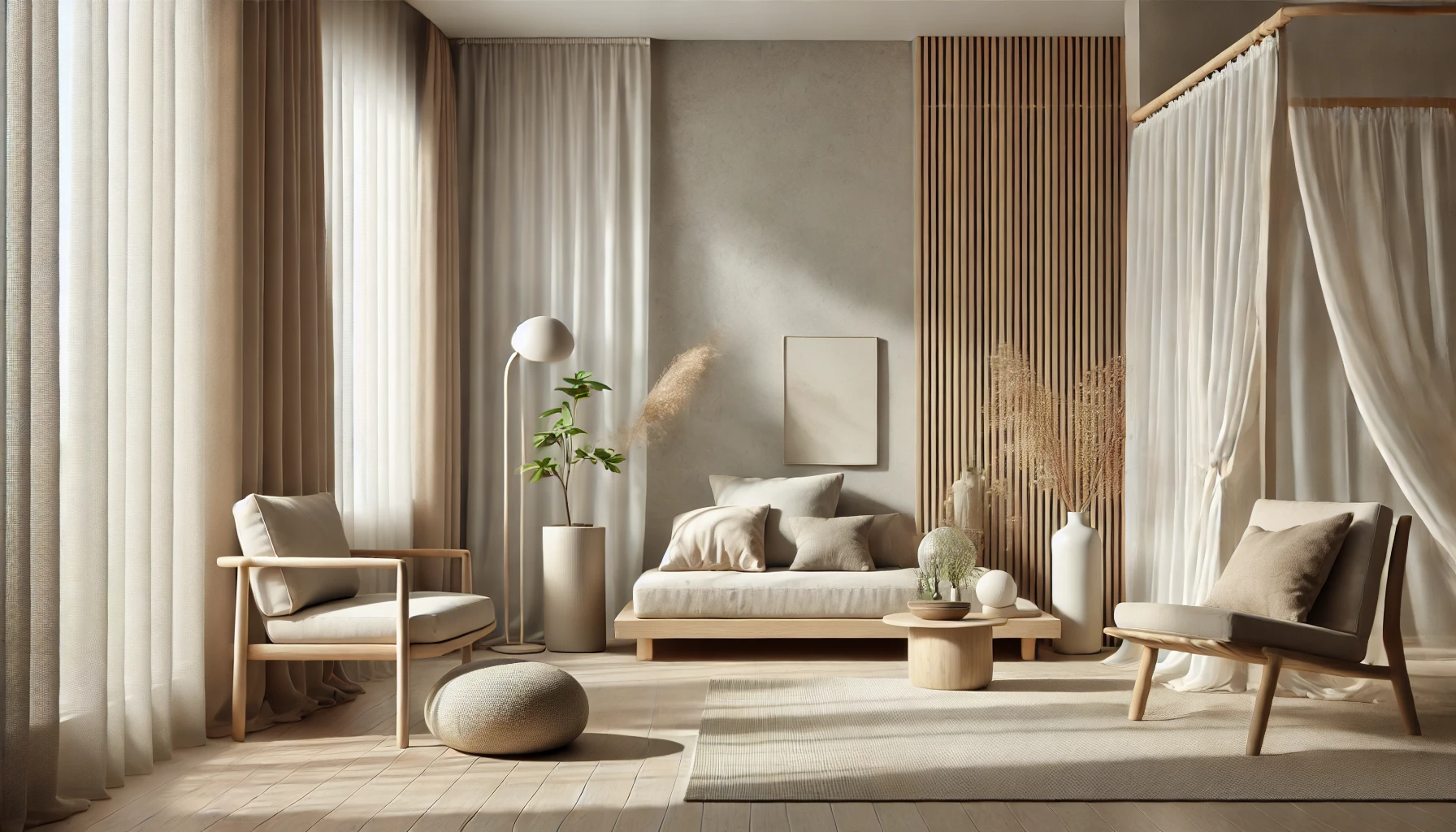
Choosing the Right Colors
In Zen home design, color choice is critical to creating a peaceful and balanced space. Soft, neutral tones such as beige, gray, and white are often used to evoke calm. However, incorporating natural hues like green, brown, and blue can also help in fostering a tranquil environment.
Opt for muted colors that reflect nature, steering clear of bold, contrasting tones. By doing this, your home becomes a place where you can relax and rejuvenate after a long day. The colors should harmonize with the materials you use, ensuring that the room feels cohesive and soothing.
Lighting the Zen Way
Lighting plays an integral role in setting the tone for a Zen-inspired home. Natural light is preferred, as it brings a sense of openness and freshness to the room. Consider using sheer curtains to allow light to filter softly into the space.
If natural light is scarce, use soft lighting solutions like floor lamps or table lamps with dimmer switches. Avoid harsh overhead lights, as they can create a jarring atmosphere. Soft lighting helps enhance the calming effect and keeps the ambiance in line with Zen principles.
Zen Home Decor Tips to Elevate Your Space
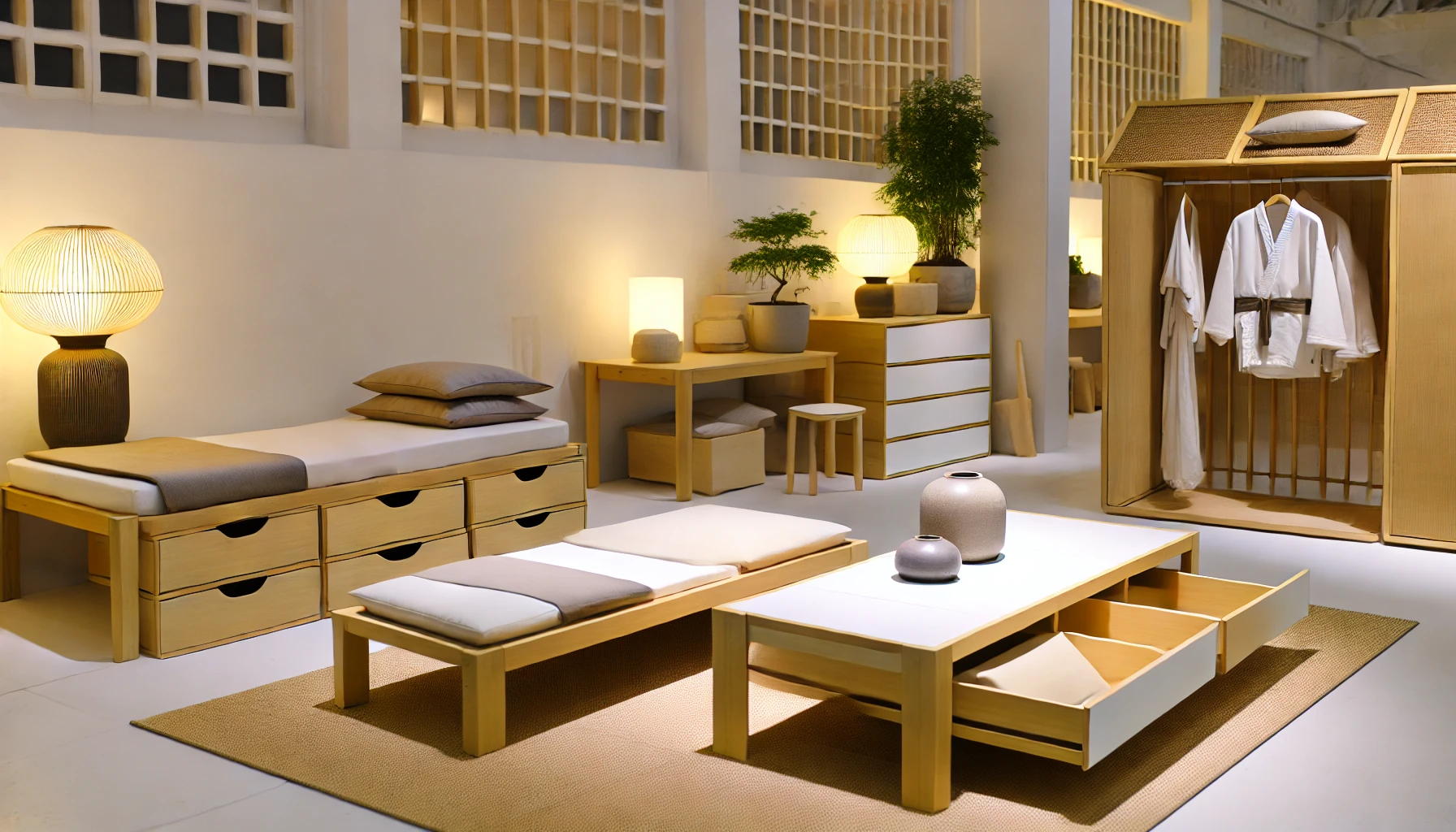
Emphasizing Functionality
In Zen home design, every item should have a function. While aesthetics are essential, functionality should never be sacrificed. Opt for multi-functional furniture pieces that offer both storage and utility, making it easier to maintain a clutter-free environment.
For instance, a coffee table with storage compartments or a bed with drawers can be practical while contributing to the overall design. Ensuring that each piece of decor serves a purpose keeps your space aligned with Zen philosophy, helping to create balance.
Investing in Quality Materials
Zen design emphasizes natural and high-quality materials. Furniture and decor items made from sustainable sources such as bamboo, cork, or organic cotton not only contribute to the overall aesthetic but also align with a mindful approach to design.
These materials are not just visually appealing but also offer durability, ensuring that your investment lasts. The use of high-quality materials is an essential component of creating a harmonious and long-lasting Zen home environment.
How to Create a Zen Space at Home: A Step-by-Step Guide
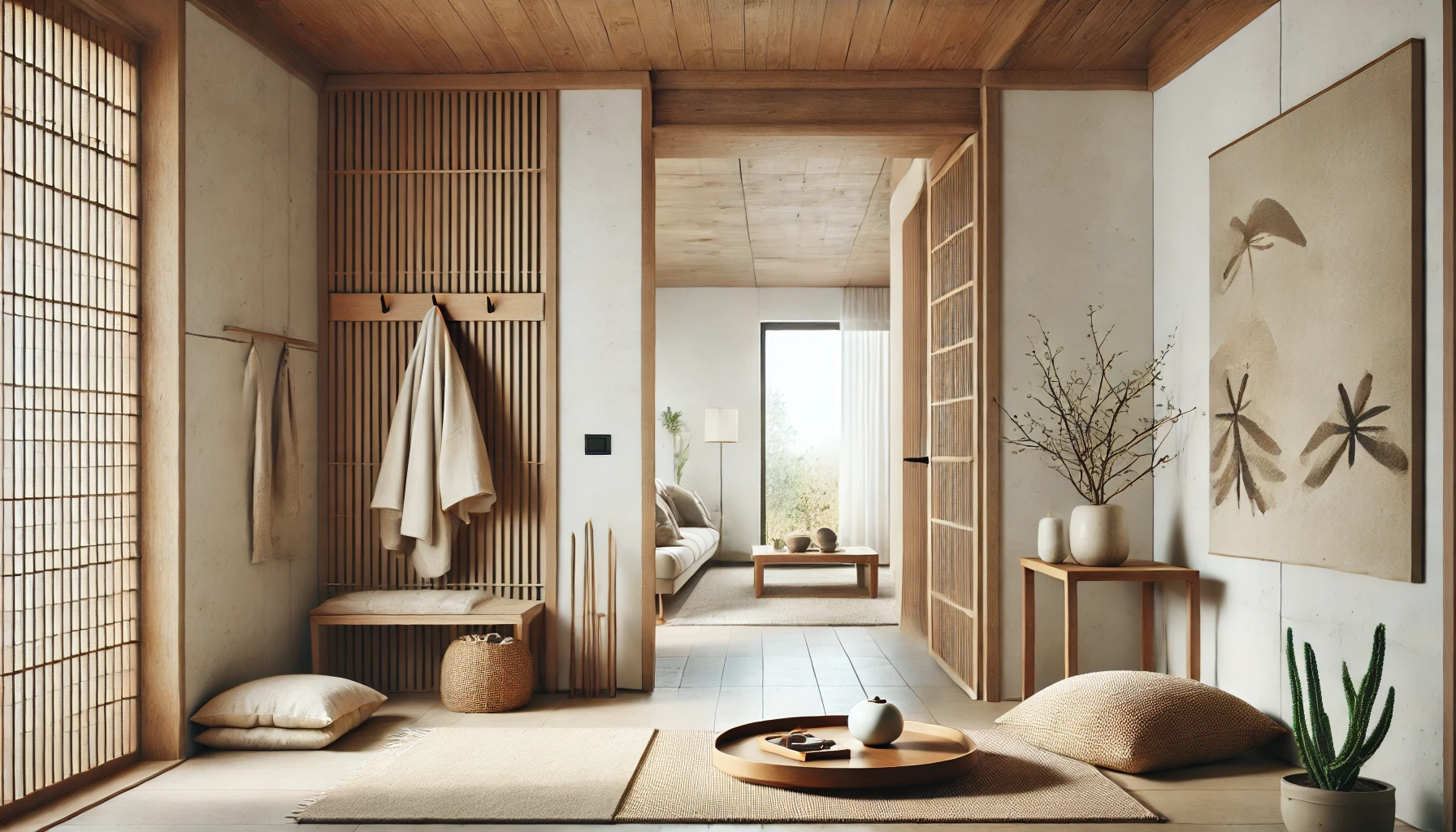
Start with the Entryway
The entryway is the first area you and your guests encounter, and it sets the tone for the entire home. To make this space more Zen-like, keep it clean and clutter-free. Add a simple, welcoming mat and perhaps a small plant or two to greet visitors.
This area should be inviting and serve as a transition from the outside world to your peaceful Zen home. Keep decor minimal but thoughtful, such as a coat rack that’s both functional and aesthetically pleasing.
Designing a Zen-Inspired Living Room
Your living room is where you spend most of your time, so it’s essential to make it a space for relaxation and rejuvenation. Focus on creating an open layout that allows for easy movement and a sense of flow. Remove unnecessary items and opt for furniture that promotes comfort and simplicity.
Add elements like a low coffee table, soft rugs, and cushions to create a welcoming atmosphere. Earthy tones and natural textures are a perfect match for a Zen-inspired living room.
Calming Zen Bedroom Decor: A Haven for Rest
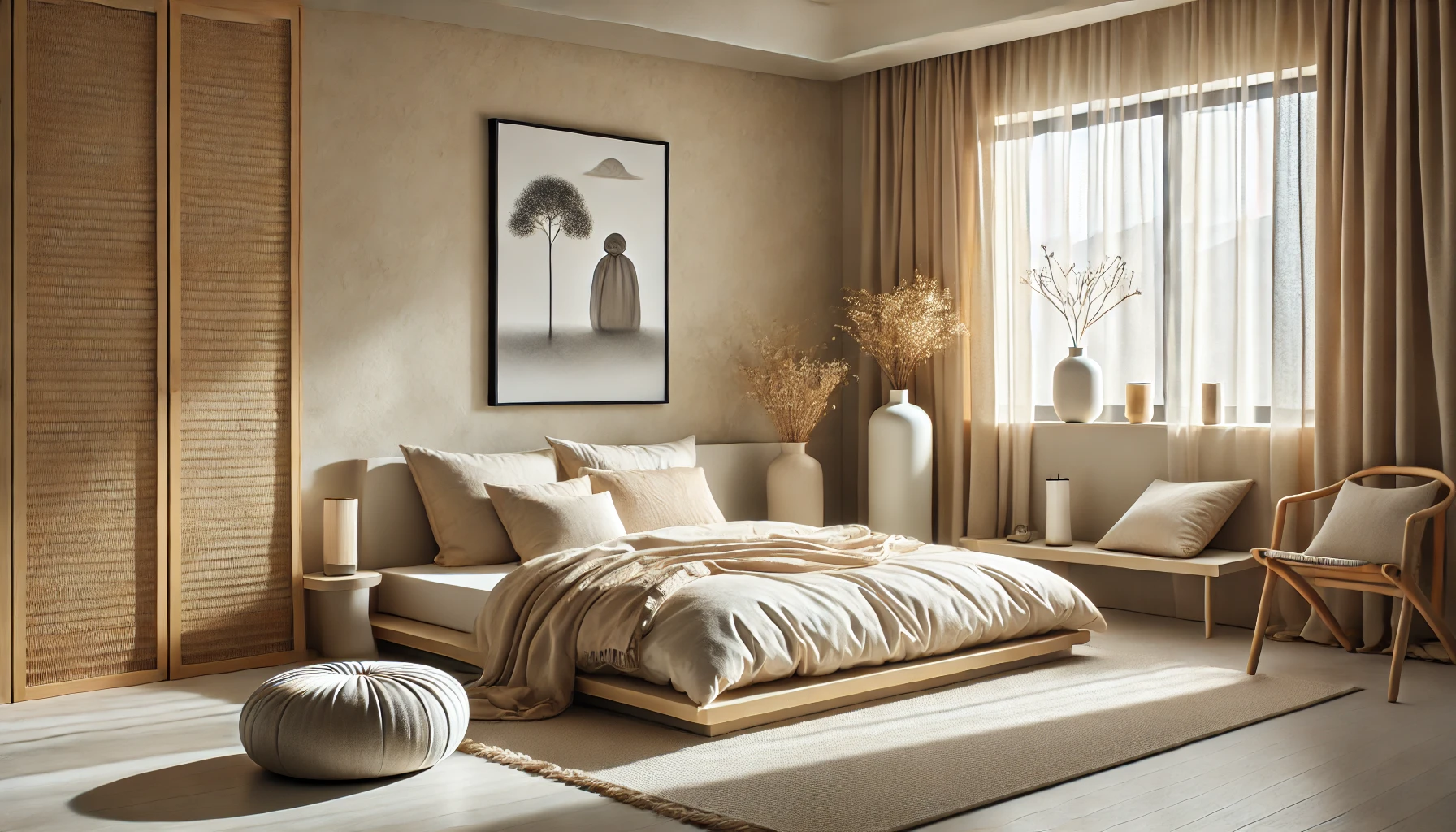
Decluttering for a Restful Sleep
A cluttered bedroom can lead to restless nights, making decluttering essential for a Zen-inspired space. Remove any distractions, such as excess furniture or electronics, to create a more serene environment. The focus should be on relaxation, so keep only what is necessary for restful sleep.
Consider adding soft bedding in neutral tones and blackout curtains to ensure a good night’s sleep. With fewer distractions, you can focus on creating a peaceful and calming space that promotes rest and relaxation.
Adding Subtle Decor
Decor in a Zen bedroom should be subtle yet intentional. A few carefully chosen items, such as a piece of calming art or a plant, can elevate the room without overwhelming it. Avoid bright or busy patterns that could disrupt the sense of calm.
Instead, opt for items that inspire tranquility, such as a simple vase with flowers or a calming essential oil diffuser. The goal is to create an environment conducive to rest, ensuring that your bedroom becomes a sanctuary for relaxation.
Japanese Zen Garden Ideas for Your Home
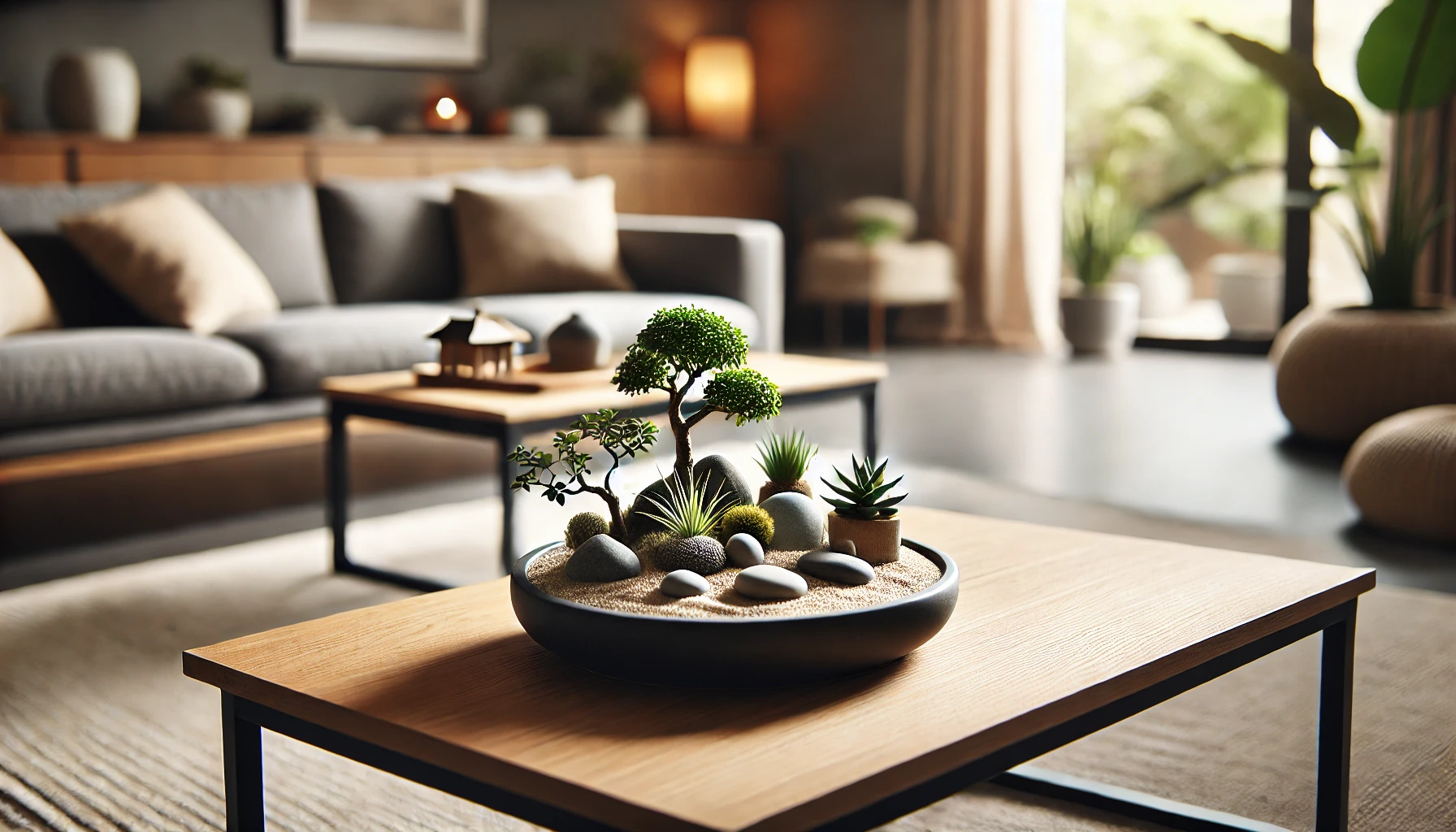
Small Zen Garden for Indoors
A small indoor Zen garden can be a great addition to any room, offering a quiet place to meditate or simply relax. These gardens typically feature sand, stones, and small plants, which can be arranged to reflect your personal aesthetic.
Set up a small Zen garden on a coffee table or in a corner of your living room to provide a calming focal point. These gardens are low maintenance and bring the outdoors into your home, contributing to the overall Zen aesthetic.
Creating a Zen Outdoor Space
If you have outdoor space, consider creating a full-size Zen garden. These gardens focus on natural elements, such as rocks, gravel, and minimalistic plantings. You could also add a water feature to enhance the peaceful atmosphere.
A Zen garden can be a place for meditation, reflection, or simply enjoying the beauty of nature. The simplicity of the design encourages mindfulness and relaxation, helping to create a space where you can unwind.
Best Colors for Zen Home Design: Finding Balance
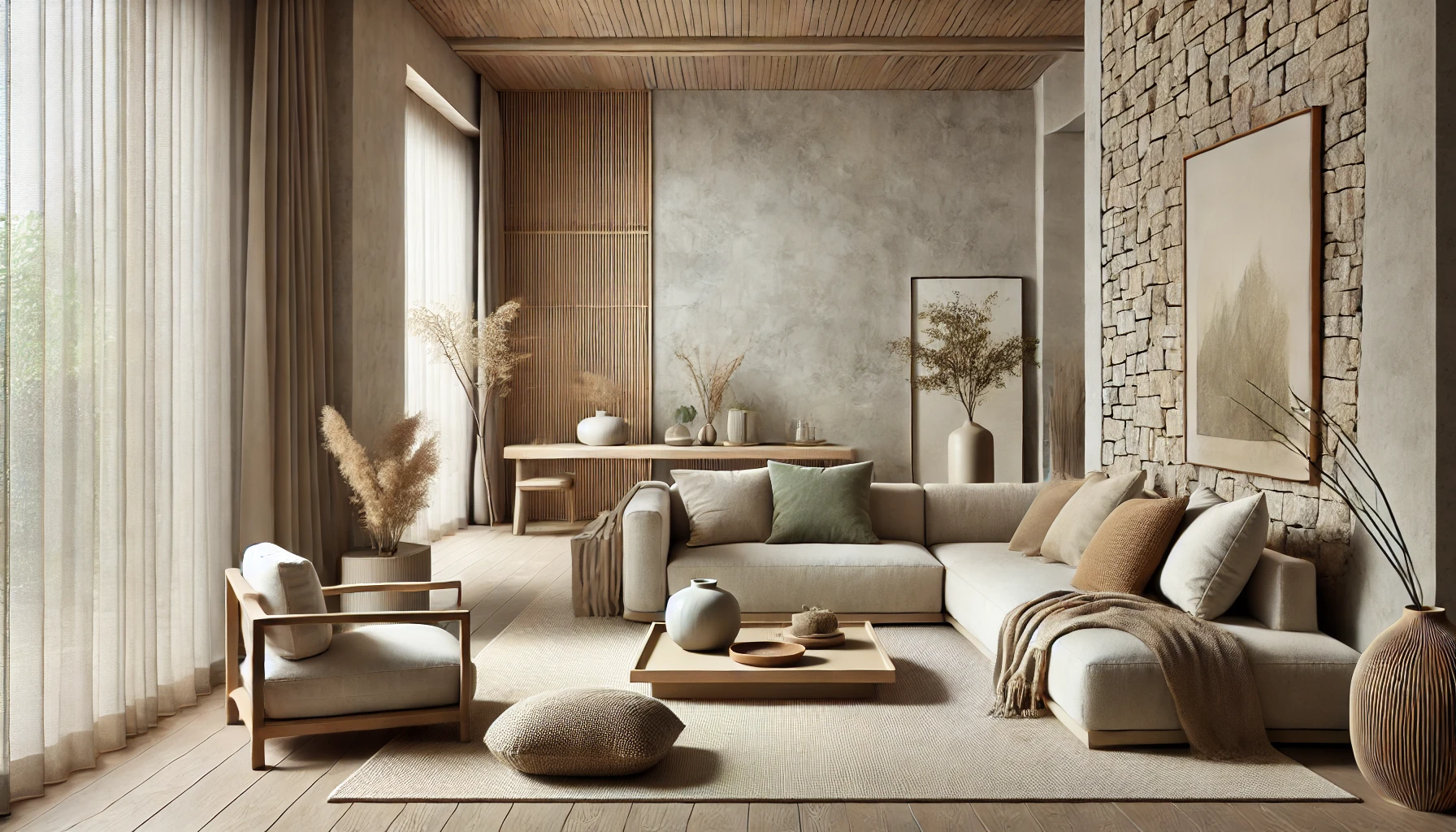
Neutral Tones for Serenity
The best colors for Zen home design are those that evoke peace and balance. Neutral tones such as beige, gray, and off-white work well in creating a calm and serene environment. These colors reflect the simplicity and purity of nature, which is a core element of Zen design.
To avoid a monotone look, add texture with natural materials like wood or stone. This will keep the space feeling warm and inviting, rather than sterile. The goal is to create harmony within the space, allowing for relaxation and reflection.
Accenting with Earth Tones
In addition to neutral tones, earth tones like muted greens, soft browns, and gentle blues can be used to accent your Zen home. These colors bring the outdoors in and help maintain a natural, calming aesthetic.
Using these accent colors sparingly will enhance the room without overpowering it. Balance is key in Zen design, and too many bright or bold colors can disrupt the peaceful atmosphere you’re trying to achieve.
Zen Home Office Setup: Boost Your Productivity
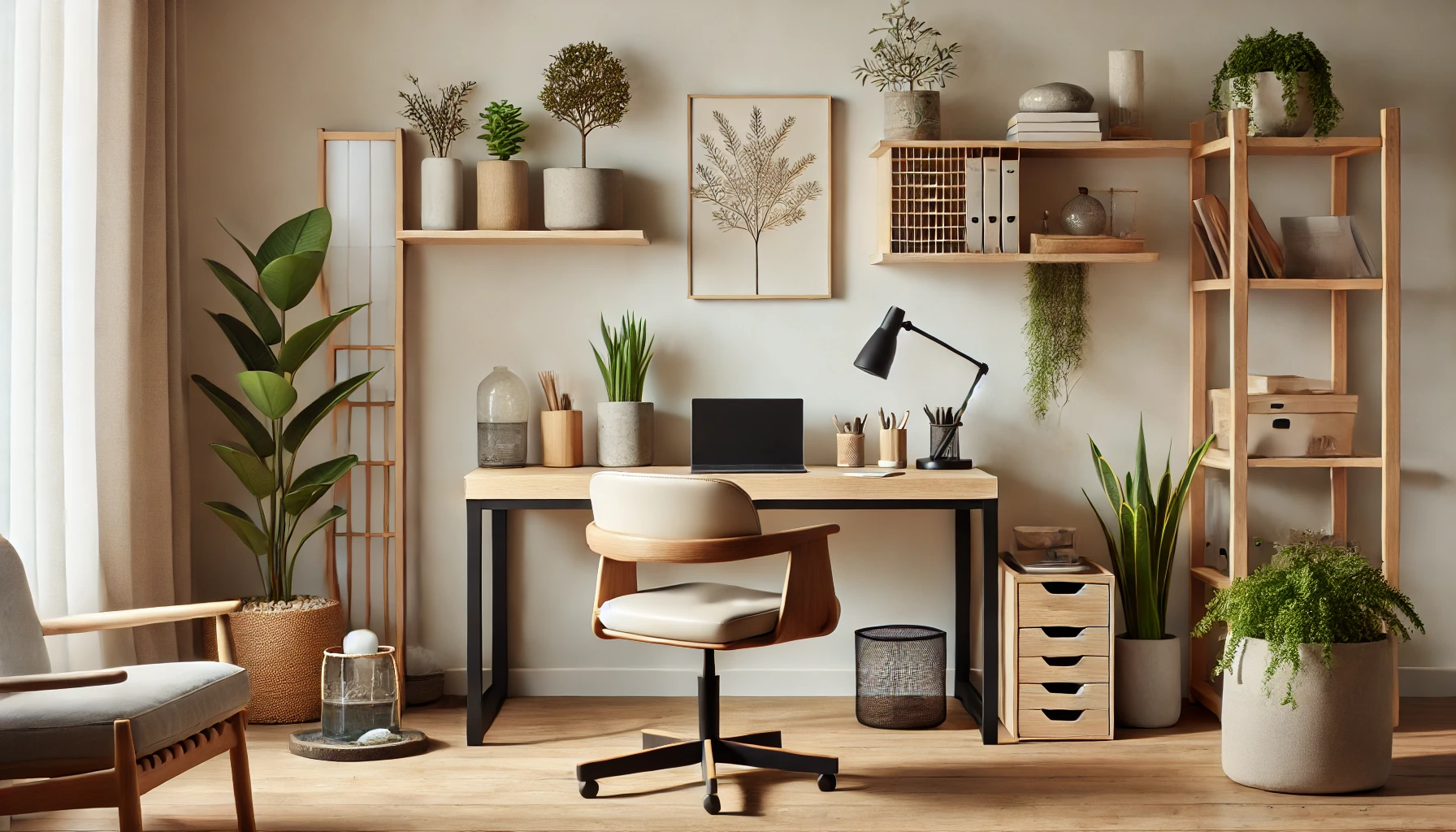
Creating a Calm Workspace
Your home office should be a place where you can focus without distraction. Start by choosing a spot in your home that is free from noise and clutter. A minimalist desk, comfortable chair, and a few carefully chosen decor items will keep your workspace organized and peaceful.
Incorporate natural elements like plants or a small water feature to bring a touch of Zen into your office. These elements will help reduce stress and boost productivity by creating a calm and focused environment.
Organizing for Efficiency
Clutter is the enemy of productivity. Use storage solutions that keep your workspace clean and organized. File cabinets, shelves, and desk organizers can help reduce clutter while still keeping everything you need within reach.
A clean, organized space not only improves productivity but also promotes a sense of calm, allowing you to focus better on your tasks.
Zen Home Design for Small Spaces: Make the Most of What You Have
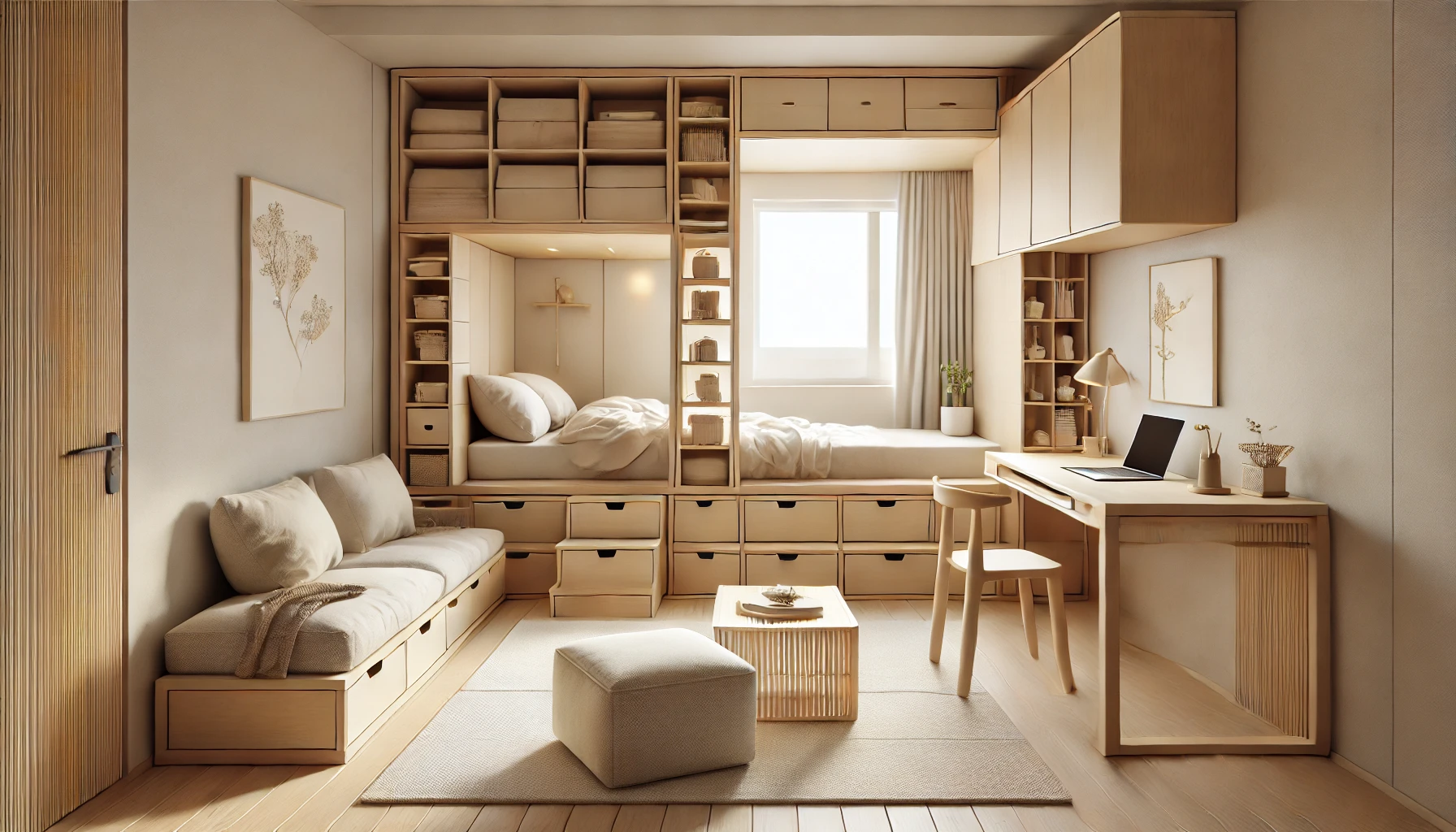
Opting for Multi-Functional Furniture
In smaller spaces, multi-functional furniture is key to maximizing both style and functionality. Choose pieces like foldable desks, storage ottomans, or beds with built-in drawers to save space without sacrificing comfort or design.
This approach allows you to keep your space clutter-free and in line with Zen principles, while still having all the essentials you need. By focusing on furniture that serves multiple purposes, you create a more efficient and peaceful living environment.
Creating an Open Flow
Open layouts are ideal for Zen design, especially in small spaces. Arrange furniture in a way that allows for easy movement and a sense of flow. Avoid blocking windows or doorways, and keep decor to a minimum to prevent overcrowding.
This will help your small space feel larger and more open, contributing to a peaceful, uncluttered atmosphere. With a little planning, even the smallest room can become a Zen haven.
How to Add Zen Features to Your Home: Quick Tips
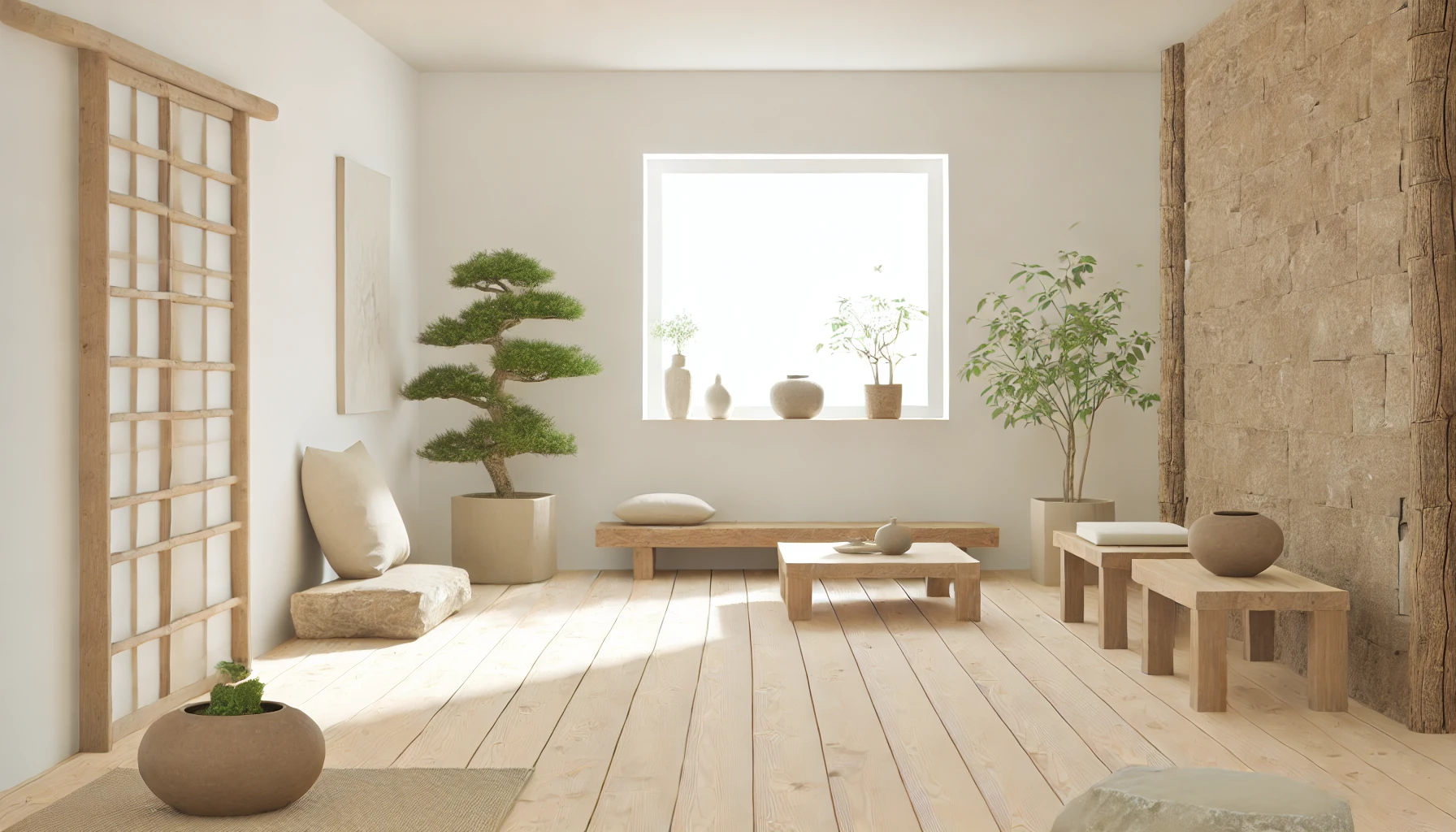
Start with Decluttering
The easiest way to start incorporating Zen principles into your home is by decluttering. Remove any unnecessary items that may be taking up space or causing visual noise. Focus on keeping only the items that serve a purpose or bring you joy.
A clutter-free home is essential for creating a peaceful, Zen-like environment. Once you’ve decluttered, maintaining that simplicity will help you feel more relaxed and focused in your daily life.
Bring Nature Indoors
Adding natural elements like plants, wood, and stone is another simple way to create a Zen-inspired home. These materials have a grounding effect, connecting you with nature and fostering a sense of calm.
Start small by adding a few plants or a natural wood piece, then gradually incorporate more natural elements as you design your space. This approach helps create a balanced and harmonious environment.
Zen Home Decor for Relaxation: Transform Your Living Space
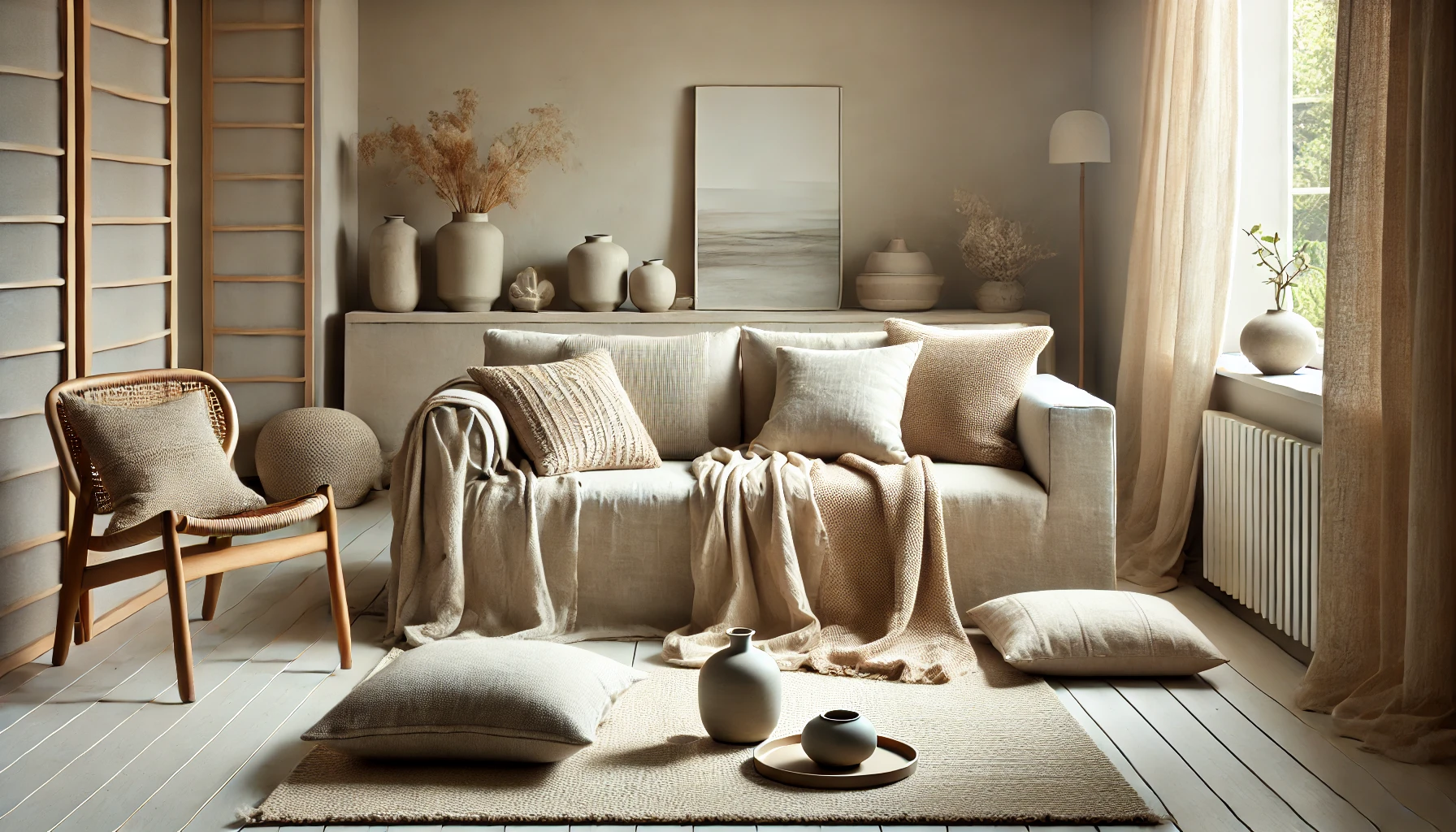
Using Soft Textiles
Soft textiles like wool, linen, and cotton can add warmth and comfort to your Zen home. Choose items that are neutral in color and soft to the touch, such as throw blankets, pillows, or rugs. These simple additions can make a big difference in how relaxed and cozy your space feels.
Textiles should be chosen for their simplicity and function, in keeping with Zen principles. Opt for natural fibers that contribute to a peaceful, harmonious environment.
Accessorizing with Purpose
Decorative items in a Zen home should be minimal and intentional. Choose accessories that serve a purpose, such as a beautifully crafted vase, a meaningful piece of art, or a calming water feature. Avoid over-accessorizing, as this can lead to a cluttered and chaotic environment.
Each item should contribute to the overall sense of tranquility, making your home a place where you can truly relax and unwind.
Modern Zen Home Design: Merging Tradition with Innovation
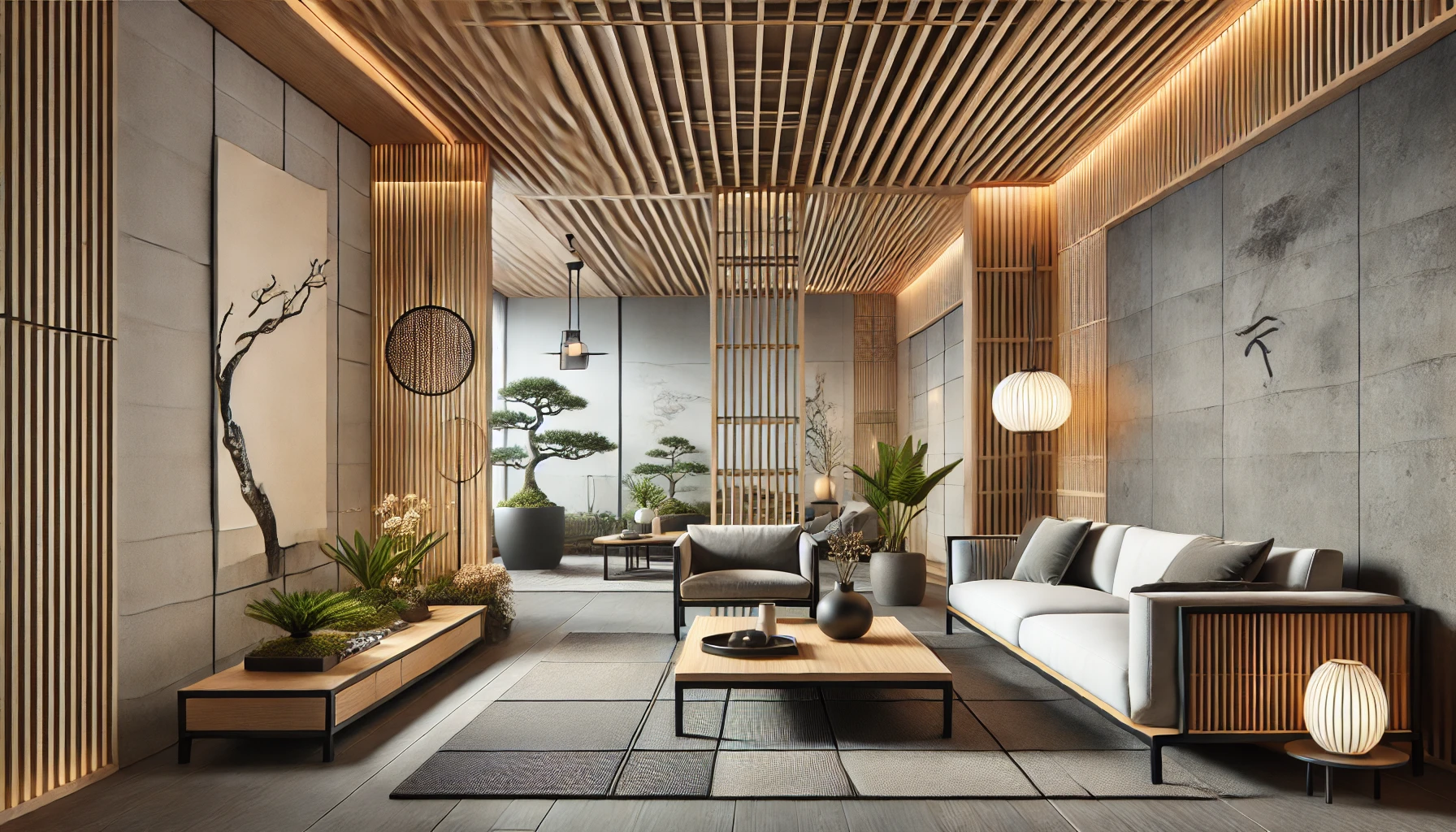
Combining Traditional Elements with Modern Style
Modern Zen home design combines the traditional elements of Zen philosophy with contemporary style. This fusion allows for sleek, modern furniture and decor that still respects the principles of balance and simplicity.
For example, you can pair a modern sofa with traditional wooden accents or use cutting-edge lighting solutions to enhance the natural elements in your home. This approach creates a fresh, contemporary look without sacrificing the peace and serenity that Zen design offers.
Incorporating Technology Thoughtfully
Technology can easily disrupt the peace of a Zen-inspired home, so it’s essential to incorporate it thoughtfully. Hide unsightly wires, choose minimalist tech accessories, and opt for devices that contribute to your overall well-being, such as smart lighting systems that mimic natural daylight.
While modern technology can offer convenience, it’s essential to balance it with the natural, calming elements that define Zen home design.
Affordable Zen Home Design Ideas: Achieving Peace on a Budget
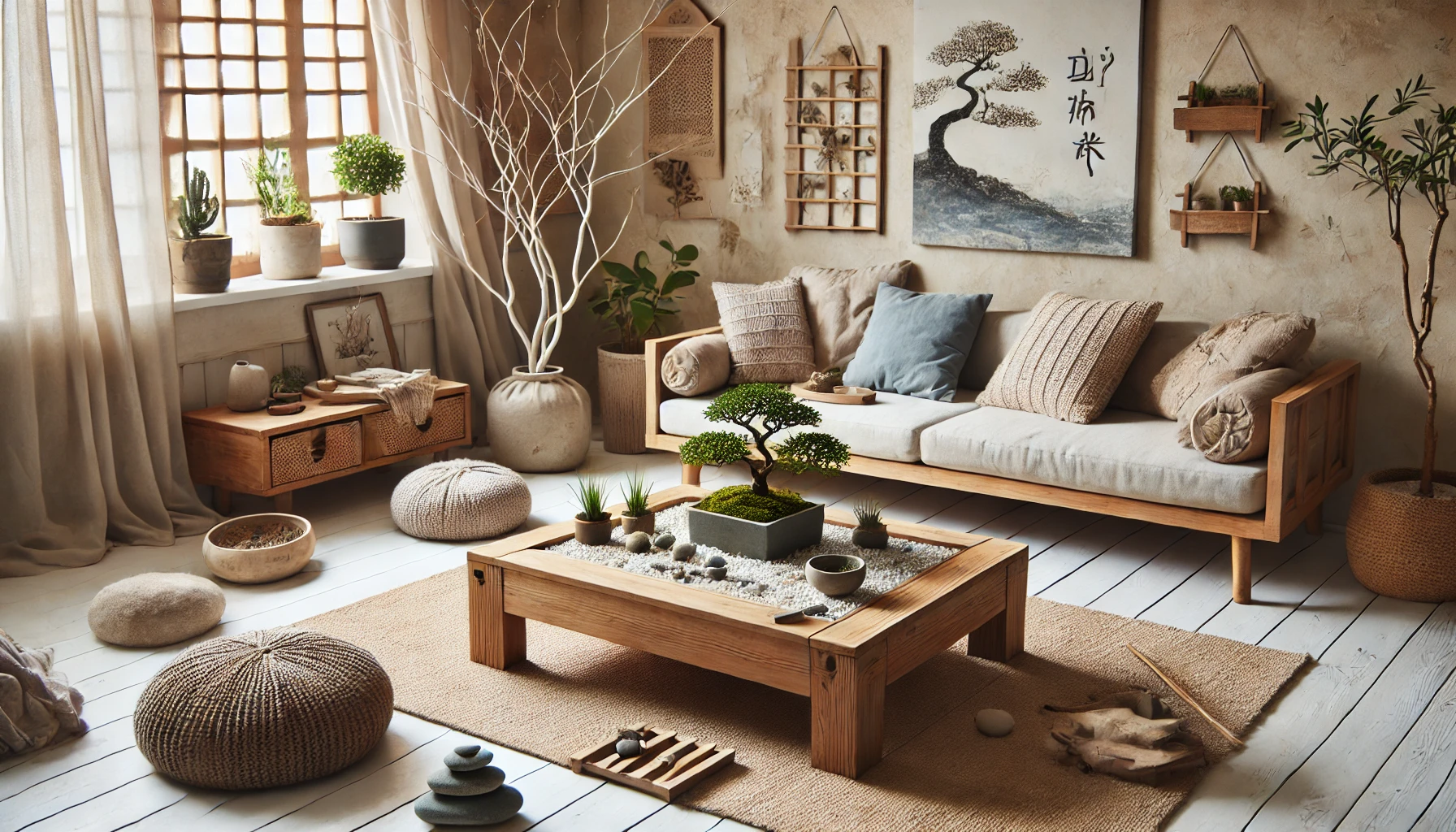
Repurposing Existing Furniture
You don’t need to break the bank to achieve a Zen-inspired home. Start by repurposing the furniture you already own. A fresh coat of paint or new upholstery can give old pieces a new lease on life, helping you achieve the Zen aesthetic without spending a fortune.
Look for ways to repurpose and recycle items to reduce waste and save money, all while creating a peaceful, harmonious environment.
DIY Zen Decor Projects
Another way to save money is by creating your own Zen decor. Simple DIY projects like making your own candles, crafting a small Zen garden, or repurposing natural elements such as stones and branches can add a personal touch to your home.
These projects are not only affordable but also align with the Zen philosophy of mindfulness and intentionality.
Start Your Zen Home Transformation Today
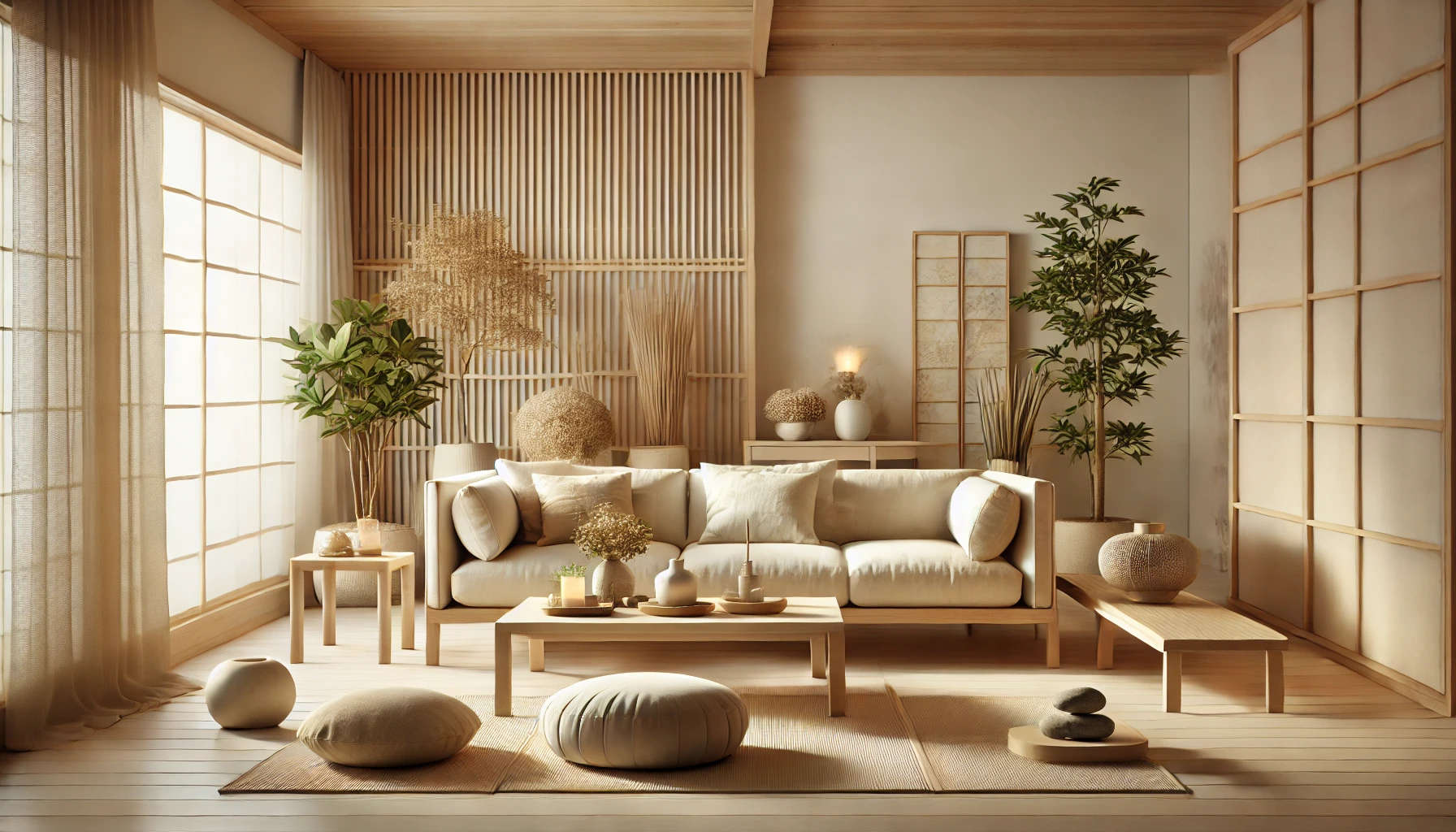
Zen home design is more than just an aesthetic; it’s a way of life. By embracing simplicity, balance, and natural elements, you can transform your home into a sanctuary of peace and relaxation. Whether you start small by decluttering or go all-in with a full redesign, the principles of Zen design can help you create a space that promotes well-being and mindfulness.
We’re here to help you bring your vision to life. Our professional home designers are experts in Zen home design and can guide you through every step of the process. Contact us today to schedule a consultation and begin your journey toward a more peaceful home. Ready to transform your space? Let’s make it happen!
Take the Next Step Toward a Peaceful Home
Thank you for joining us on this journey through Zen home design. We hope this guide has inspired you to bring more peace and balance into your living space. Whether you’re starting small or ready for a complete transformation, the key to Zen home design is simplicity, functionality, and a connection with nature.
If you’re ready to take the next step, our team is here to help. From consultation to execution, we provide end-to-end design services tailored to your needs. Don’t wait to create the home you’ve always dreamed of. Contact us today, and let’s start building your Zen sanctuary together.
F.A.Q: Zen Home Design
What is Zen home design and how does it benefit your lifestyle?
Zen home design focuses on simplicity, minimalism, and natural elements. It helps create a calm and peaceful atmosphere, promoting relaxation and mindfulness.
How can I incorporate Zen design principles in a small apartment?
Maximize space by using multi-functional furniture, decluttering, and sticking to neutral tones. Add plants and natural materials to maintain the Zen aesthetic in small spaces.
What are the essential elements of Zen interior design?
The essential elements include minimalism, neutral color palettes, natural materials, indoor plants, and soft lighting to create a serene, balanced environment.
How do I create a Zen-inspired bedroom for better sleep?
Keep your bedroom clutter-free, use soft, neutral colors, and choose simple bedding. Add soft lighting and minimize distractions like electronics to promote restful sleep.
What types of furniture are best suited for Zen home design?
Simple, functional furniture made from natural materials like wood or bamboo fits perfectly with Zen home design. Look for pieces with clean lines and minimal ornamentation.
How do I design a Zen-inspired living room?
Choose neutral tones, minimalistic furniture, and natural materials. Incorporate plants and soft lighting to enhance the serene atmosphere of your living room.
Can Zen home design be budget-friendly?
Yes, Zen design can be achieved on a budget by repurposing furniture, decluttering, and focusing on simplicity. DIY projects and natural materials can also be cost-effective.
How can I bring Zen design principles to my home office?
Create a minimalist workspace, use natural light, and add plants for a calming atmosphere. Keep your desk clutter-free to maintain focus and productivity.
What colors are best for a Zen-inspired home?
Neutral tones like beige, white, and gray are ideal for a Zen-inspired home. Accent with natural hues such as green, blue, or brown to maintain balance and serenity.
How can I create a Zen garden in my home?
You can create a small Zen garden using sand, stones, and minimalistic plantings. Zen gardens are often designed to promote meditation and relaxation.
What lighting is best for Zen home design?
Natural light is preferred, but soft, diffused lighting works well too. Avoid harsh lighting and opt for dimmable lamps or candles to create a tranquil ambiance.
How does Zen home design affect mental health?
Zen design promotes mindfulness, relaxation, and balance, which can significantly reduce stress and improve overall well-being by creating a peaceful living environment.
What is the difference between Zen design and minimalist design?
Both focus on simplicity, but Zen design emphasizes natural elements, mindfulness, and creating a calm atmosphere, while minimalism is about reducing excess.
Can I mix Zen design with modern elements?
Yes, you can blend Zen with modern design by using sleek, minimalist furniture and neutral colors while incorporating natural elements like wood and plants for balance.
How do I maintain a Zen home design long-term?
Regularly declutter your space, maintain a minimalist mindset, and refresh natural elements like plants and wooden furniture to keep your Zen home design sustainable.
 Home Designing Get expert home decor tips and design inspiration at HomeDesigning.blog. Transform your living spaces with trending styles and DIY ideas!
Home Designing Get expert home decor tips and design inspiration at HomeDesigning.blog. Transform your living spaces with trending styles and DIY ideas!
